THE ABSOLUTE SIGHTSEEING TOUR
Combining all the above sights and landmarks this is the complete tour of Athens and Attica region. Departing from Athens Int. Airport the helicopter heads on a different direction this time, starting from Sounio and the Temple of Poseidon. Our route continues by flying over the Athens Riviera and just before reaching the port of Piraeus the helicopter will fly towards the sea and the Saronic Gulf. You will have the opportunity to view from above the islands of Spetses, Hydra, Poros and Aegina. On the way back our tour continues by flying over the port of Piraeus and the city of Athens just before landing at Athens Int. Airport. The duration of the tour is approx. 90 minutes.
Route Details
Athens airport – Sounio – Aigina – Poros – Hydra – Spetses – Lycavittos Hill – Ancient Agora – Acropolis – Panathenaikon Stadium (Kalimarmaro) – Athens airport
Cape Sounio
The coastal road of Athenian Riviera continues through marvelous tourist resorts and ends at Cape Sounio, Attica’s south-eastern tip. There you will find the impressive Temple of Poseidon – the last piece of the ancient Athenians’ homeland every time they sailed into the Aegean. Watching the sunset filling the sky with every shade of mauve and pink and making the sea glowing like a sapphire is an unforgettable experience that will weave a powerful spell over you.
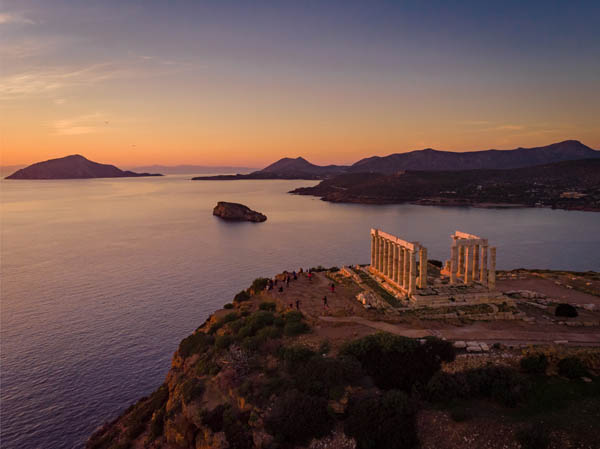
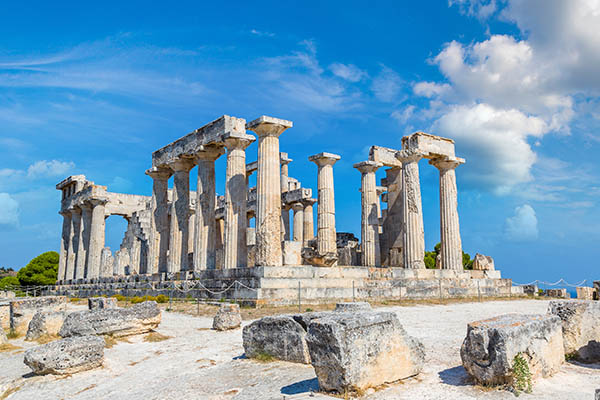
Aegina island – Athena Aphaia Temple
The Temple of Aphaia has been dedicated to goddess Athena and is located on the island of Aegina, on top of a hill. This is one of the ancient architectural wonders of ancient Greece. It was built in 480 BC and 25 of the original 32 Doric columns still stand due to the skill of the restorers. It is situated in a Sanctuary complex in Aegina about 13 km east of the main port.
The temple was built over the ruins of an earlier temple built around 570 BC that existed at the very site but was later destroyed in the fire in 510 BC. The remains of this old temple were filled to get a larger flat terrace on which to build a new temple. This led to the ruins of the old temple to be well preserved. Many painted remnants are still found.
Poros island
Lush vegetation, beautiful little beaches, picturesque villages, and a vintage aura make Poros Greece a unique island to visit during your holidays in Greece. The first thing that will stand out to you as you approach Poros port by ferry, is its charming capital and the trademark of the island, the Poros Clock Tower.
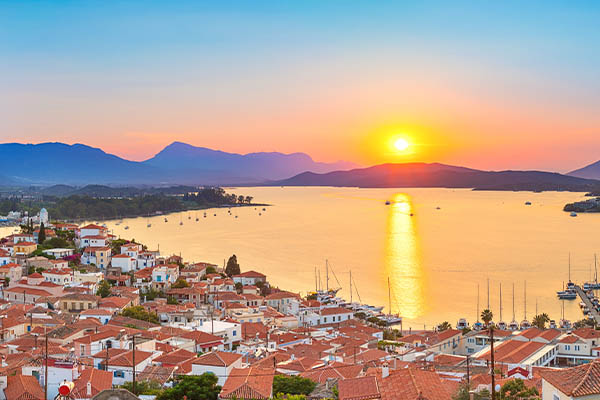
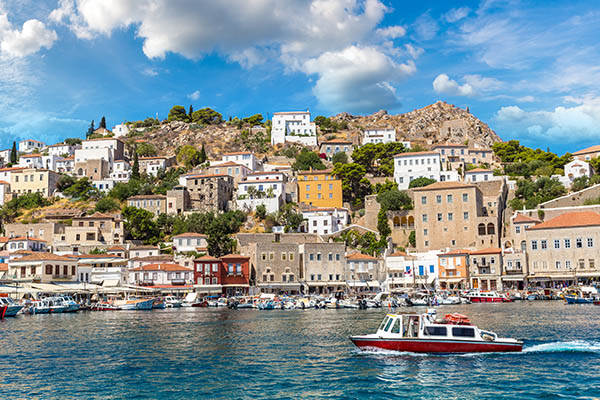
Hydra island
Located in the heart of the Argo Saronic Gulf, close to Athens, Hydra is, hands down, one of the quaintest Greek islands.
The charming atmosphere of the island has seduced many international jet setters and has been a retreat for famous personalities, such as Leonard Cohen, Maria Callas, Aristotle Onassis and many more! Elegant stone mansions, narrow alleys, donkeys walking around, churches, little shops, and a picturesque waterfront set the scene of an island fairytale!
Spetses island
Spetses island Greece, and especially its picturesque main town, stands out for its architecture and elegance. This is mainly due to the Venetian mansions that lie in Spetses Town and the excellent boutique Spetses hotels that combine traditional with modern elements, in a unique way.
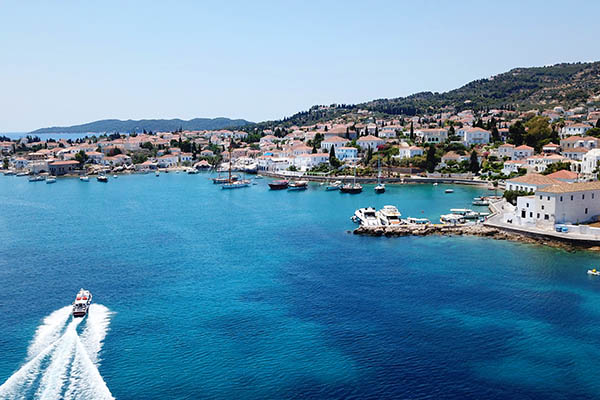
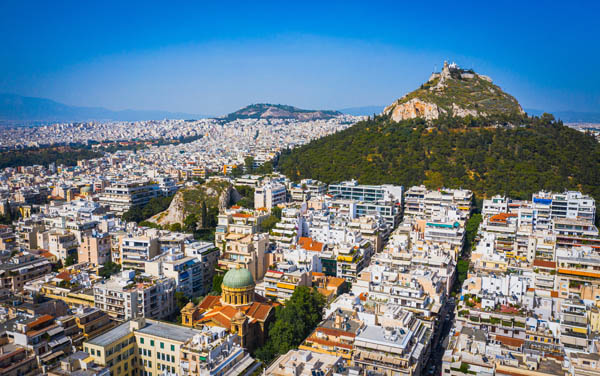
Lycabettus Hill
Mount Lycabettus, also known as Lycabettos, Lykabettos or Lykavittos is a Cretaceous limestone hill in the Greek capital Athens. At 300 meters (908 feet) above sea level, its summit is the highest point in Athens and pine trees cover its base. The name also refers to the residential neighbourhood immediately below the east of the hill.
The hill is a tourist destination and can be ascended by the Lycabettus Funicular, a funicular railway which climbs the hill from a lower terminus at Kolonaki. At its two peaks are the 19th century Chapel of St. George, a theatre, and a restaurant.
Ancient Agora of Athens
The ancient Agora of Athens (also called the Classical Agora) is the best-known example of an ancient Greek agora, located to the northwest of the Acropolis and bounded on the south by the hill of the Areopagus and on the west by the hill known as the Agoraios Kolonos, also called Market Hill.
The Agora’s initial use was for a commercial, assembly, or residential gathering place.
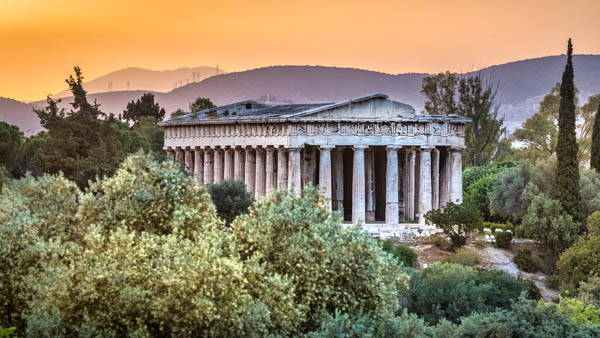
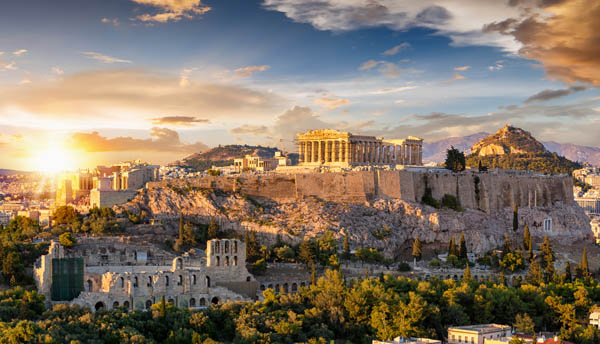
Acropolis
The Acropolis of Athens and its monuments are universal symbols of the classical spirit and civilization and form the greatest architectural and artistic complex bequeathed by Greek Antiquity to the world. In the second half of the fifth century bc, Athens, following the victory against the Persians and the establishment of democracy, took a leading position amongst the other city-states of the ancient world. In the age that followed, as thought and art flourished, an exceptional group of artists put into effect the ambitious plans of Athenian statesman Pericles and, under the inspired guidance of the sculptor Pheidias, transformed the rocky hill into a unique monument of thought and the arts.
The most important monuments were built during that time: the Parthenon, built by Ictinus, the Erechtheon, the Propylaea, the monumental entrance to the Acropolis, designed by Mnesicles and the small temple Athena Nike.
Panathenaic Stadium
Athens’ Panathenaic Stadium or Panathinaiko, is also known as the Kallimarmaro, which means “beautifully marbled” and is the world’s only stadium made entirely of marble which comes from nearby Mount Pendeli. It was built in 1896 for the first modern Olympics in the ruins of the ancient marble stadium that was built in 329 for the Panathenaic Games, by Lycurgus, replacing an even older stadium made of wood.
In 140 AD it was enlarged and renovated by Herodes Atticus and it seated 50,000 people as it does today. (During the 1896 Olympics it held 80,000 people!)
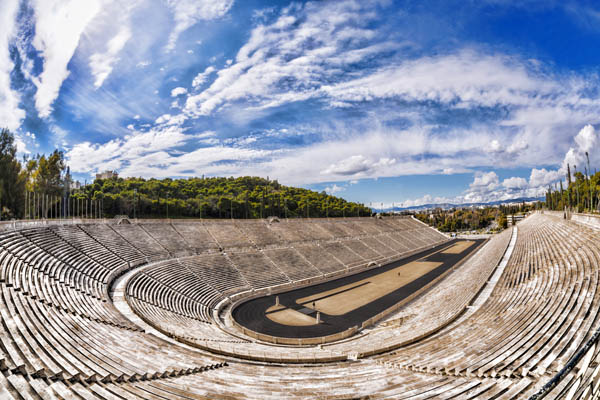
BOOK YOUR ABSOLUTE SIGHTSEEING TOUR
Please fill below your details to learn more about our prices and availability.

